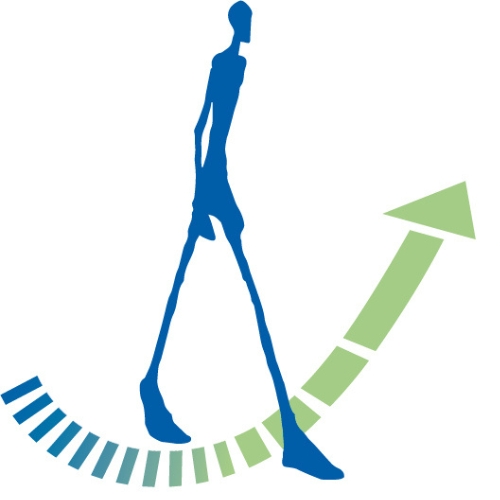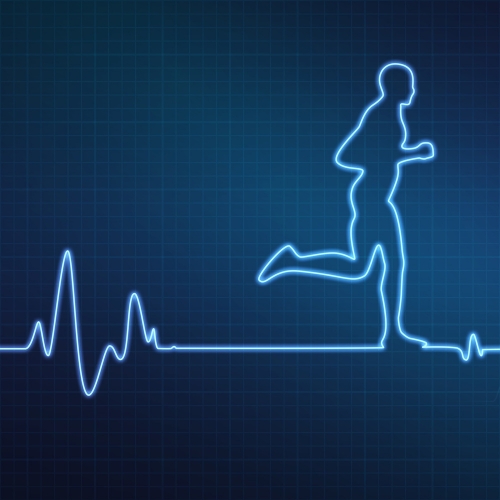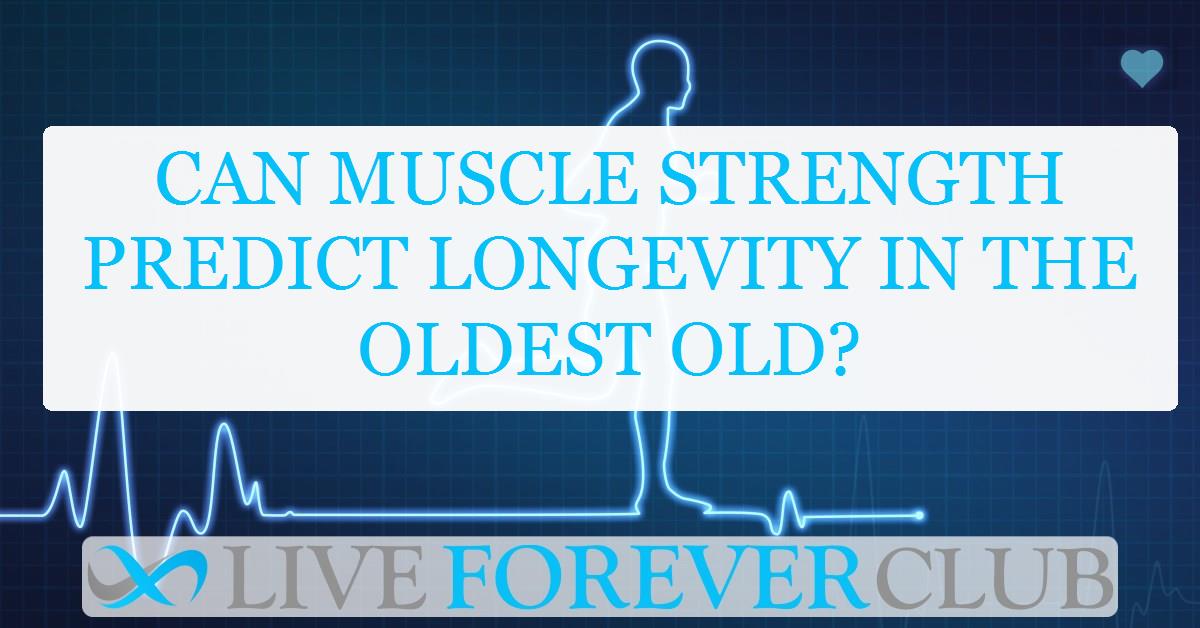Ageing is an inevitable journey, but the way we age holds endless possibilities. For many, reaching 90 or beyond used to seem rare, yet it’s increasingly common in our modern era. This population, often referred to as the "oldest old," presents unique health challenges, especially with the decline of physical strength.
But could something as simple as muscle strength, particularly handgrip strength, reveal insights about their longevity? A recent multinational study offers a groundbreaking look at the connection between muscle strength and mortality among the oldest members of society, suggesting that handgrip strength could be a powerful predictor of survival.
Why Muscle Strength Matters
For decades, researchers have focused on the connection between physical strength and health outcomes. Muscle strength is more than just a measure of physical capability—it influences how our body handles metabolic functions, inflammatory responses, and daily tasks. In older adults, diminished muscle strength correlates with numerous adverse health outcomes, including frailty, increased risk of falls, and even early death.
However, studies examining these correlations typically involve adults aged 65-80, a group already considered elderly. Research specifically focused on those aged 90 and above remains scarce. This gap leaves questions unanswered: does muscle strength continue to impact mortality among the oldest old, and if so, how strong is this link? The study, titled "Association of Muscle Strength With All-Cause Mortality in the Oldest Old: Prospective Cohort Study From 28 Countries," sought to explore this relationship in unprecedented depth.
Understanding the Study’s Purpose and Scope
This study aimed to determine whether there’s a gradual or threshold-based association between muscle strength and mortality in the oldest old. In other words, the researchers wanted to see if a small increase in strength would reduce mortality risk or if a specific threshold level of strength had to be reached for significant health benefits. By examining a large, diverse population, the study sought to fill the gaps left by previous research, which often focused on smaller, country-specific samples.
Covering 28 countries across Europe and Israel, the study utilized data from the Survey of Health, Ageing, and Retirement in Europe (SHARE). This robust dataset provided a diverse and representative sample of individuals aged 90 and older, allowing for a detailed and culturally inclusive analysis.
Methods and Participant Profile
The study design was longitudinal, meaning it followed participants over time to monitor changes in muscle strength and mortality rates. The SHARE study, the primary data source, included responses from individuals across multiple waves, from February 2004 to December 2022. Participants were chosen based on stringent criteria: each had to be 90 or older at their first recorded wave and have at least two complete assessments to track their health progression.
In total, 1,890 individuals met these requirements, providing the researchers with a substantial sample size to analyze trends and draw meaningful conclusions. Of this group, 61.6% were women, a statistic that reflects the higher life expectancy generally observed among females.
Measuring Muscle Strength with Handgrip Dynamometry
Muscle strength can be assessed in various ways, but handgrip strength has gained popularity due to its simplicity and accuracy as a proxy for overall muscle health. For this study, trained interviewers used handgrip dynamometers to measure participants’ grip strength. This device requires the individual to squeeze it as hard as possible, providing a quantifiable strength metric in kilograms.
Why handgrip? Research shows that handgrip strength correlates with strength in other muscle groups and can indicate functional abilities like walking, climbing stairs, and even cognitive resilience. In older adults, handgrip strength serves as an accessible and reliable measure of general health, which the researchers used to determine if it influenced survival in their oldest participants.
What the Researchers Found
The study’s findings add a compelling piece to the puzzle of ageing and longevity. As expected, the researchers observed a clear link between handgrip strength and mortality risk. However, rather than identifying a single threshold value that defined "high-risk" or "low-risk" strength, they found that mortality risk decreases incrementally as muscle strength increases.
Gradual Association with Mortality Risk: With each kilogram increase in handgrip strength, mortality risk showed a gradual and curvilinear reduction. Participants in the lowest 10% of muscle strength had significantly higher mortality risks compared to those closer to the median strength level. On the other hand, those in the 90th percentile exhibited a much lower mortality risk. This gradient-like association suggests that every bit of muscle strength matters in the quest for longevity.
Gender-Specific Patterns: Men and women showed similar trends in the strength-mortality relationship, although men generally had higher baseline strength. When analyzing the data separately for each gender, the researchers noted that men with handgrip strength at or above the 90th percentile had a 25% lower mortality risk than those in the 10th percentile. For women, the decrease was similar, indicating that while men might naturally have more strength, women also experience significant health benefits from higher muscle strength.
Consistency Across Geographies: The study’s cross-cultural scope allowed the researchers to observe consistent results across 28 different countries. Despite regional differences in healthcare, lifestyle, and diet, the link between handgrip strength and longevity remained steady, reinforcing the universal importance of muscle strength for ageing populations.
Why Muscle Strength Influences Mortality
But why does muscle strength play such a critical role in longevity, especially for the oldest old? The answer likely lies in the diverse roles muscles play in our body. Muscle tissue isn’t just responsible for movement; it also influences metabolic health, regulates blood sugar, and even releases compounds called myokines, which have anti-inflammatory properties. In advanced age, maintaining muscle strength can help stabilize metabolism, support immune function, and reduce the risk of chronic diseases.
Furthermore, muscle strength relates directly to functional independence. A stronger individual is more likely to carry out daily activities, maintain mobility, and avoid falls, which are a common cause of injury and death in older adults. This ability to stay active and independent likely contributes to the lower mortality rates observed among those with higher handgrip strength.
Comparing the Study to Previous Research
While past studies have highlighted the importance of muscle strength for ageing populations, this study stands out for its scope and methodology. Prior research typically categorized muscle strength into broad groups (e.g., low, medium, high) and focused on younger elderly groups (80s or younger). This study’s approach, using continuous measures of handgrip strength and focusing solely on those aged 90 and above, allowed for a more nuanced and precise analysis.
Additionally, the study’s use of restricted cubic splines in statistical modeling enabled the researchers to capture a detailed picture of how strength relates to survival. This model’s flexibility allowed them to detect gradual associations rather than strict thresholds, adding depth to our understanding of muscle strength’s role in health and longevity.
Practical Implications: Strength Training for the Oldest Old
What practical lessons can we draw from these findings? The most immediate takeaway is that maintaining muscle strength should remain a priority, even for individuals in their 90s and beyond. For many, this might mean incorporating simple resistance training into their routine, focusing on exercises that improve strength without overexertion.
Studies have shown that even low-intensity resistance training can yield significant benefits for older adults. For instance, one study found that frail elderly individuals improved their handgrip strength through gentle resistance exercises performed just three times a week. Another study noted that combining resistance and balance training improved physical performance and reduced fall risk among nonagenarians.
Challenges in Implementing Strength Training
Of course, introducing strength training for the oldest old population isn’t without challenges. Factors such as cardiovascular health, joint limitations, and frailty need careful consideration. Experts recommend a gradual approach, starting with low-intensity exercises under professional supervision. Exercises that build both upper and lower body strength, alongside balance training, can help improve overall stability and reduce injury risks.
Furthermore, family support and community-based programs can play a vital role in helping older adults stay active. Many community centers offer senior-focused exercise classes that cater to different fitness levels, making it easier for individuals to stay committed and motivated. These classes also provide social interaction, which can be another key factor in improving quality of life.
Study Limitations
Despite its strengths, this study has limitations worth noting. For one, handgrip strength, while a reliable indicator, doesn’t encompass all aspects of muscle function. Lower body strength, balance, and endurance also contribute to overall health, and future studies could benefit from incorporating these metrics.
Additionally, while the study included 28 countries, sample sizes varied, and the specific cultural and genetic factors influencing muscle strength were not fully explored. Further research could delve into these variables to paint a more comprehensive picture of how diverse lifestyles impact ageing and muscle health.
Lastly, the study’s reliance on self-reported health data and proxy mortality reports could introduce biases. Although these methods are commonly used in large-scale research, incorporating direct health assessments and more frequent strength measurements would provide even greater accuracy.
Broader Implications
The findings from this study underscore the broader importance of promoting muscle health throughout life. Ageing populations are expected to grow substantially in the coming decades, putting increasing pressure on healthcare systems. Encouraging strength training and physical fitness among all age groups could reduce the burden on healthcare by improving physical resilience and reducing the need for long-term care.
These insights could lead to policy changes that support senior-focused fitness programs, particularly for the oldest old. Simple interventions, like community exercise classes or access to in-home fitness equipment, could make a significant difference in improving life expectancy and quality for ageing populations.
Path Toward Healthier Ageing
In summary, the study "Association of Muscle Strength With All-Cause Mortality in the Oldest Old" sheds light on a crucial, yet often overlooked aspect of ageing. For individuals aged 90 and above, every bit of muscle strength can contribute to longer, healthier lives. Handgrip strength, though often underestimated, serves as a key indicator of mortality risk, underscoring the value of maintaining strength well into advanced age.
For those with ageing parents or grandparents—or individuals approaching their own senior years—these findings offer hope and actionable steps. By prioritizing muscle health, whether through resistance training, community classes, or simply staying active, the oldest old can enhance their quality of life and possibly extend their years. In a world where more people are living to 90 and beyond, building strength is a simple yet powerful strategy for embracing the journey of ageing.
The study is published in the Journal of Cachexia Sarcopenia and Muscle. It was led by researchers from University of Valencia.






